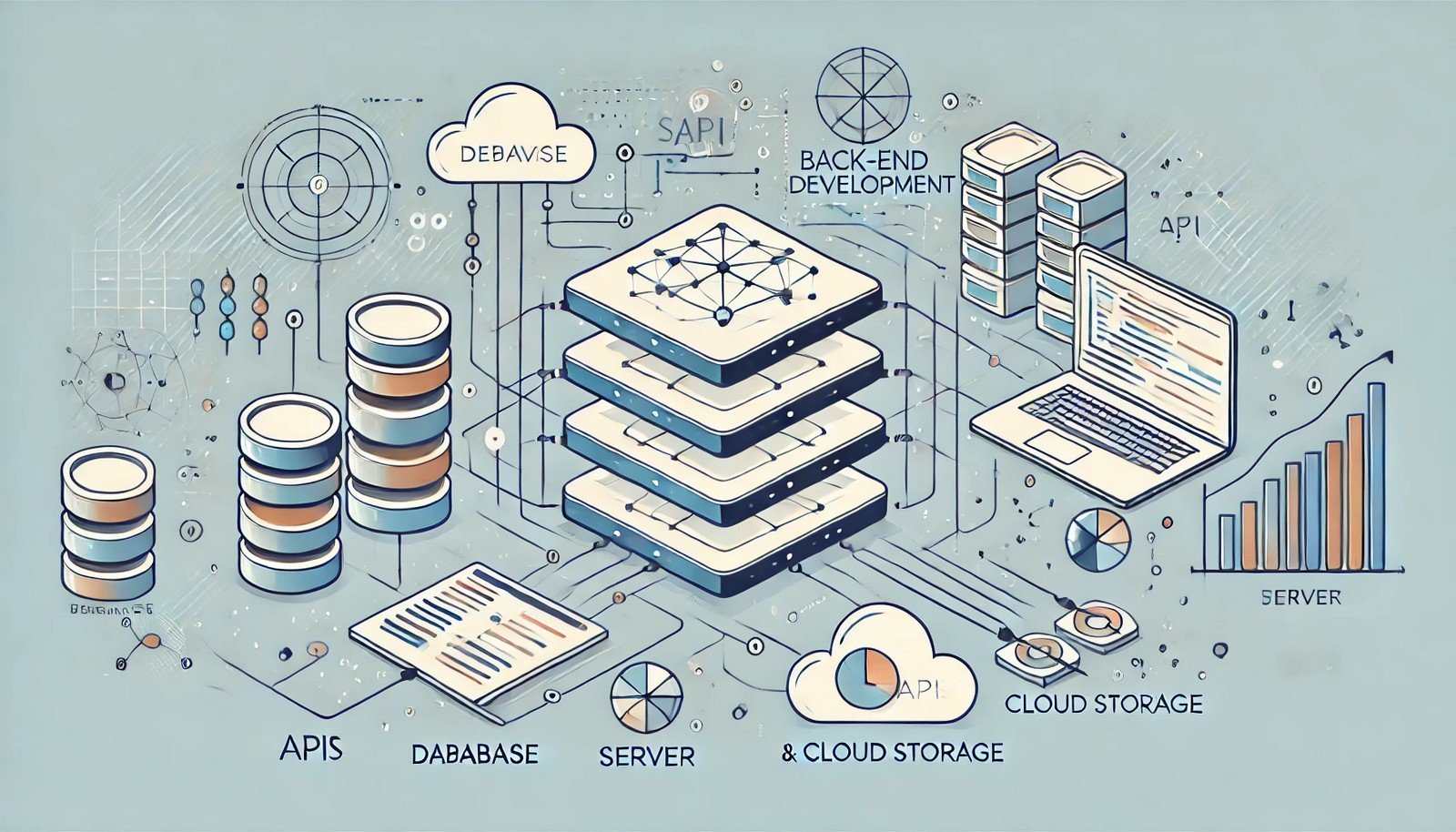Back-End Development
 (Representational Image | Source: Dall-E)
(Representational Image | Source: Dall-E)
Quick Navigation:
- Back-End Development Definition
- Back-End Development Explained Easy
- Back-End Development Origin
- Back-End Development Etymology
- Back-End Development Usage Trends
- Back-End Development Usage
- Back-End Development Examples in Context
- Back-End Development FAQ
- Back-End Development Related Words
Back-End Development Definition
Back-end development involves building and maintaining the server-side components of a web or software application. It includes the database, server, and application logic, enabling the front-end to function as intended. Back-end developers work with programming languages like Python, Java, Ruby, or PHP and frameworks like Node.js or Django. Their work ensures that data flows seamlessly between the front-end and the server, supporting functionalities like user authentication, data storage, and business logic implementation.
Back-End Development Explained Easy
Imagine a website is like a house. The front-end is the outer paint and decorations you see, while the back-end is all the wiring and plumbing that makes the house work. Back-end developers make sure that when you switch on a light (or click a button on a website), it works because everything behind the scenes is properly connected and functioning.
Back-End Development Origin
The concept of back-end development emerged with the advent of client-server architecture in the 1970s and 1980s. As software became more complex, the division of front-end and back-end responsibilities helped manage systems more effectively. Modern back-end development evolved to handle vast data volumes and complex functionalities with the rise of the internet and web applications.
Back-End Development Etymology
The term “back-end” originates from the idea of working behind the scenes, managing the internal mechanisms of an application, as opposed to the “front-end,” which interacts with users.
Back-End Development Usage Trends
Back-end development is evolving with cloud computing, microservices, and serverless architectures becoming mainstream. Companies are moving from monolithic systems to scalable, distributed back-end frameworks to support global applications. The need for robust APIs and real-time data handling has also fueled the growth of technologies like GraphQL and WebSockets.
Back-End Development Usage
- Formal/Technical Tagging:
- Web Development
- Server-Side Programming
- Software Engineering - Typical Collocations:
- "back-end API development"
- "database integration"
- "server-side logic"
- "RESTful back-end services"
Back-End Development Examples in Context
- Back-end developers design the systems that allow users to log into a website.
- They ensure seamless data handling when an e-commerce site processes an order.
- In gaming, the back-end manages multiplayer connections and real-time updates.
Back-End Development FAQ
- What is back-end development?
Back-end development refers to creating the server-side logic, database management, and APIs that enable the front-end to function. - How does back-end development differ from front-end development?
Back-end focuses on behind-the-scenes processes, while front-end handles the user interface and experience. - What are common languages used in back-end development?
Python, Java, Ruby, PHP, and JavaScript (Node.js). - Why is database management important in back-end development?
It stores, retrieves, and organizes data, supporting application functionality. - What is the role of APIs in back-end development?
APIs allow the front-end to communicate with the server and other services. - How does cloud computing affect back-end development?
It enables scalable and flexible server management, reducing infrastructure overhead. - What challenges do back-end developers face?
Managing scalability, security, and efficient database queries are common challenges. - Can back-end development impact website speed?
Yes, optimized back-end systems ensure fast server responses and data retrieval. - What tools do back-end developers use?
Tools include Docker, Kubernetes, Postman, and server frameworks like Express.js. - Is back-end development relevant in mobile apps?
Yes, back-end systems manage data and processes for mobile applications.
Back-End Development Related Words
- Categories/Topics:
- Web Development
- Cloud Computing
- APIs
Did you know?
The back-end powers critical systems, from online banking to streaming platforms. For instance, Netflix uses a sophisticated back-end architecture to stream millions of videos globally without interruptions.
PicDictionary.com is an online dictionary in pictures. If you have questions or suggestions, please reach out to us on WhatsApp or Twitter.Authors | Arjun Vishnu | @ArjunAndVishnu

I am Vishnu. I like AI, Linux, Single Board Computers, and Cloud Computing. I create the web & video content, and I also write for popular websites.
My younger brother, Arjun handles image & video editing. Together, we run a YouTube Channel that's focused on reviewing gadgets and explaining technology.



Comments powered by CComment